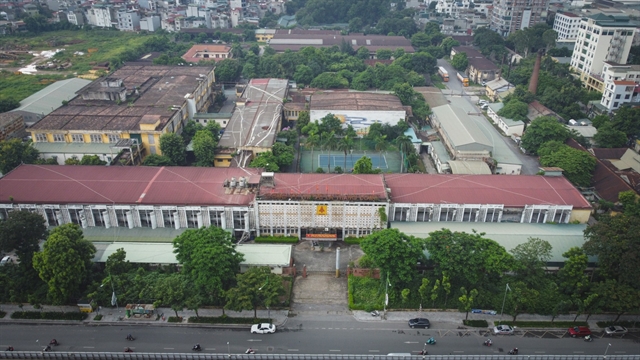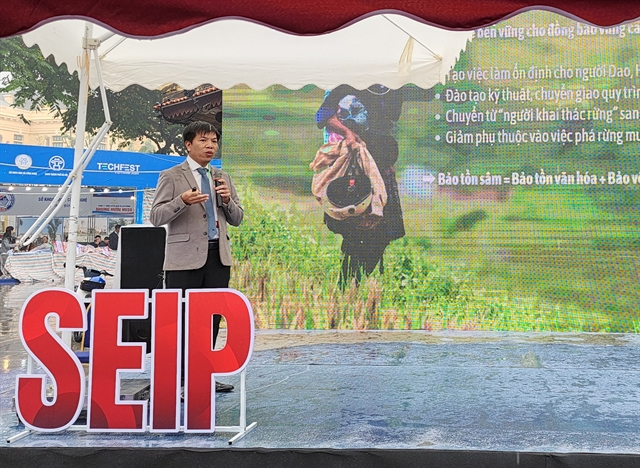 Opinion
Opinion

Nguyễn Xuân Cường, deputy director of the DRVN and Professor Vũ Cao Minh, former director of the Institute of Geology talks about effective measures to cope with natural calamities
Nguyễn Xuân Cường, deputy director of the DRVN and Professor Vũ Cao Minh, former director of the Institute of Geology discuss measures to cope with natural disasters.
Nguyễn Xuân Cường, deputy director of DRVN
How are national roads following the heavy rains and floods in our northern mountainous provinces?
 |
| Nguyễn Xuân Cường |
Heavy rains and flashfloods in northern mountainous provinces have seriously affected the lives of many people and caused serious damage to many national roads. However, by now most of the traffic has returned to normal, except the portion of the national road 4 H running from Lai Châu to Điện Biên, which is still blocked.
On June 30, the roads were opened for small cars and motorbikes and it is expected that by July 5 the traffic will return to normal in all national roads in the region.
Can you talk about what the Việt Nam Road Administration do to ensure traffic safety in the region?
Under instruction from the Ministry of Transport, the Việt Nam Road Administration (DRVN) has asked all road units to do their best to repair damaged national roads as soon as possible and then install required road signals to help drivers drive safely.
Meanwhile, the DRVN has ordered all road units to check the safety of the national roads and take measures to consolidate any weak portions.
According to initial report, the national road portion 4D running from Lào Cai to Lai Châu (from Km69-Km85) in the near future will be consolidated.
The repairing cost will be taken from the road maintenance budget of the DRVN. In its annual budget, the DRVN allocates 5 per cent of the budget for contingency spending for storms and floods repair.
Due to climate change, storms and floods will become more complicated in Việt Nam. Has the DRVN adopted scenarios to respond to emergencies which might occur in the monsoon season?
At the onset of the monsoon season, the DRVN has always developed scenarios to respond to emergencies for each type of roads along all national routes or highways. It has become one of our normal practices that in the early of the calendar year, we order the Department of Road Management to conduct surveys to detect any weak road portions and then develop plans to consolidate them before the monsoon season.
Besides, if any mishap happens, the DRVN has instructed the management unit of that road portion to assign people to divert the traffic flow to ensure safety for road users.
Professor Dr Vũ Cao Minh from the Việt Nam Academy of Science
How do you evaluate the havoc caused during floods in northern mountainous provinces?
50661847PM.jpg) |
| Vũ Cao Minh |
The havoc was so serious, particularly in terms of human lives. We have done a lot to limit the losses in both human life and property, yet they have still occurred.
We know that soil erosion and flashfloods have often played havoc. These natural disasters do not only come from climate change, but also from the changes in geology, topography and human factors.
When the climate is changing fast and it is accompanied by the changes in geology and rampant acts of forest destruction, soil erosion and others natural disasters will occur more frequently.
In other words, it is the people who have caused natural calamities to happen more often and they have not adopted effective measures to avert such mishaps.
But we have developed some good scenarios to avert consequences. Still mishaps continue to happen. How do you respond to that?
These documents have been prepared for provinces and districts which are likely hit by natural disasters. But, these documents were not designed specifically for people living in villages/hamlets which are prone to natural disasters. This is something for us to think about now.
Of course, preventive measures against natural disasters should be based on each kind of natural disaster. For example, with large scale storms or floods we should mobilise resources from society. However, for landslides or flashfloods we need on the spot support. In such a case we have to train people on to how to handle such disasters.
Adding to that we also need communication equipment to inform the people about upcoming natural disasters.
For example, in Sáng Tùng hamlet, in Tà Ngảo Commune, Sín Hồ district, early warnings saved more than a hundred people from the land slide on July 26._VNS




